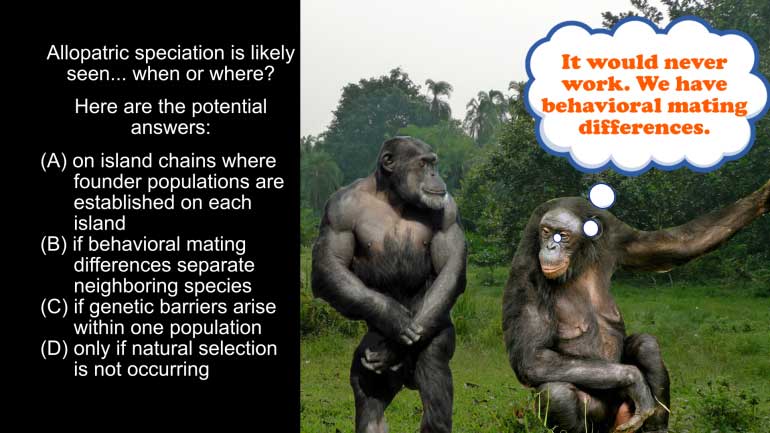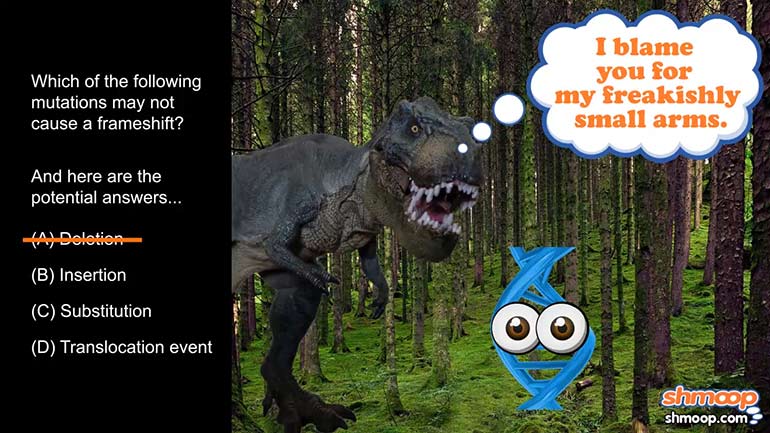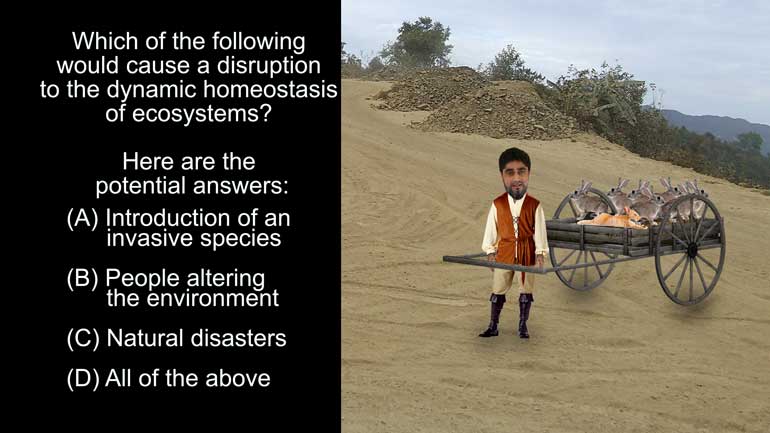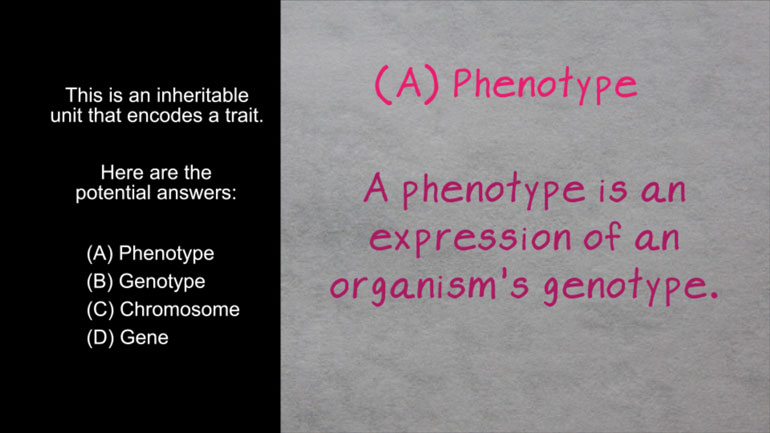ShmoopTube
Where Monty Python meets your 10th grade teacher.
Search Thousands of Shmoop Videos
Evolve in changing environment Videos 9 videos
AP Biology 4.1 Evolution. When or where is allopatric speciation likely seen?
AP Biology 1.5 Essential Life Process Information. Which of the following mutations may not cause a frameshift?
AP Biology 4.1 Evolution 62 Views
Share It!
Description:
AP Biology 4.1 Evolution. When or where is allopatric speciation likely seen?
Transcript
- 00:04
Here’s your shmoop du jour, brought to you by Charles Darwin.
- 00:07
Besides coming up with the Theory of Evolution, he uh… had a really awesome beard. [Charles Darwin in a forest]
- 00:13
So he also had that going for him.
- 00:16
Allopatric speciation is likely seen... when or where?
- 00:20
And here are the potential answers...[Mumbling]
Full Transcript
- 00:26
Okay…first off, keep in mind that allopatric speciation is basically the same thing as [lots of islands spread out]
- 00:32
geographic speciation.
- 00:34
In other words, we’re talking about different species arising because of factors associated [species of monkey appear on separate islands]
- 00:38
with their locations.
- 00:39
Like…maybe a new species of squirrel pops up right outside a mixed nut factory. [Squirrels appear outside a nut factory]
- 00:45
Got it?
- 00:46
Good.
- 00:47
Now let’s go through the potential answers…
- 00:48
Let’s check out B...”if behavioral mating differences separate neighboring species.”
- 00:53
This could lead to species diverging, but…it’s not the right answer. [Two monkeys talking on grass]
- 00:58
Why not?
- 00:59
Because allopatric speciation is associated with geography, not behavior. [A gorilla scratching it's head]
- 01:01
B is out.
- 01:04
C… “…if genetic barriers arise within one population.”
- 01:08
Genetic barriers arise BECAUSE OF allopatric speciation, not the other way around. [Two tortoises between a DNA helix]
- 01:12
They could also arise due to mutation.
- 01:15
Like…with all those X-men folk. [People dressed in X-men costumes]
- 01:17
Remember, we’re looking for something that is dependent upon geography, so let’s keep
- 01:21
looking…
- 01:22
How about D... “…only if natural selection is not occurring”?
- 01:25
Nope, can’t be this one because natural selection is almost ALWAYS occurring. [Man in a lab stood next to a giant tomato and a average tomato]
- 01:29
About the only time it doesn’t occur is during the controlled, selective breeding
- 01:33
of species by humans.
- 01:36
Go us.
- 01:37
That leaves us with...A.
- 01:38
Allopatric speciation is likely seen... on island chains where founder populations [A chain of islands]
- 01:43
are established on each island.
- 01:45
Bingo.
- 01:46
Why?
- 01:47
Because allopatric speciation occurs if geographical isolation is created… [Birds appear on different plots of island]
- 01:50
.,..and island chains, like the Galapagos, are perfect places for that to happen.
- 01:55
Think of Darwin's example of the Galapagos finches. [Pencil drawings of the galapgos finches]
- 01:57
Various species arose on different islands from a common ancestor after they became isolated
- 02:02
from one another.
- 02:04
Sounds like that answers our question, so…
- 02:05
A it is.
- 02:07
Will allopatric speciation occur when humans colonize other solar systems? [Man and boy pointing to Charles Darwin on a beach]
- 02:12
Given enough time, you can probably count on it…
Related Videos
AP Biology: Biological System Interactions Drill 1, Problem 1. Complete the sentence about a saturated fatty acid.
AP Biology: Essential Life Process Information Drill 1, Problem 1. If one parent is heterozygous for the sickle cell trait while the other par...
AP Biology: Evolution Drives the Diversity and Unity of Life Drill 1, Problem 1. The first cells on planet Earth were likely what?
AP Biology: Free Energy and Molecular Building Blocks Drill 1, Problem 1. Which statement incorrectly describes the properties of water?
AP® Biology: Evolution Drives the Diversity and Unity of Life Drill 1, Problem 2. What was likely the first genetic material?













